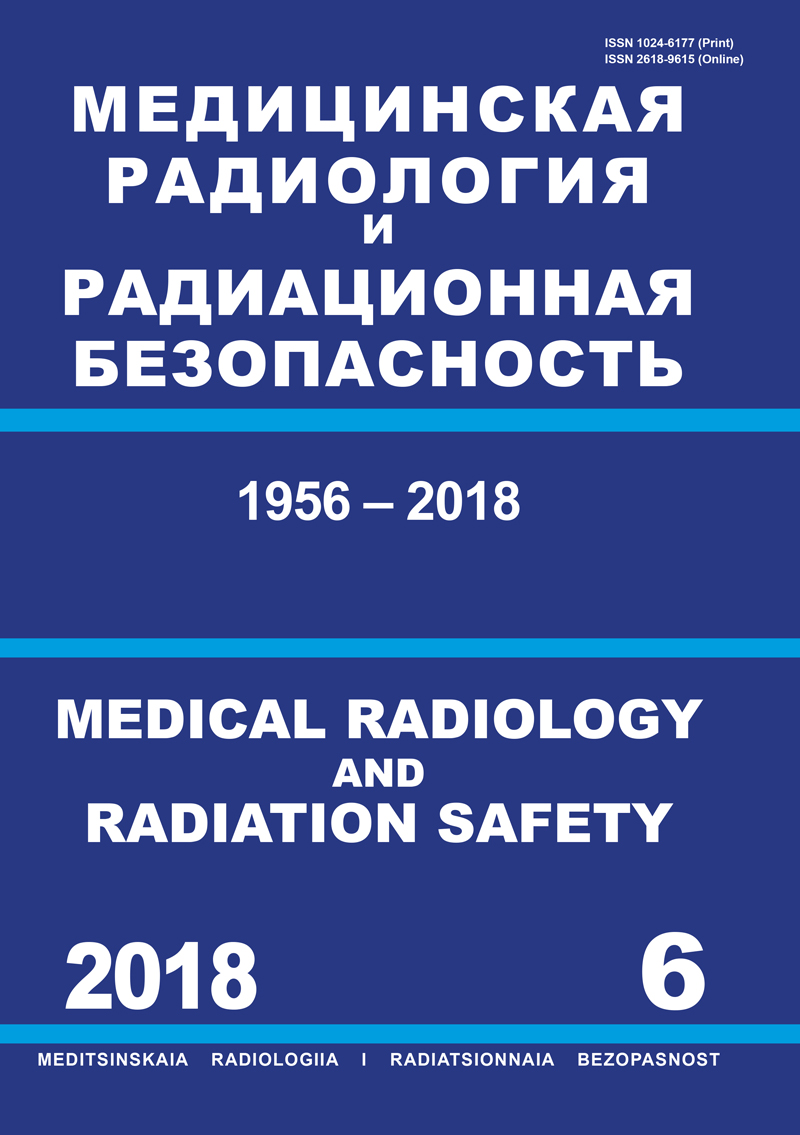Russian Federation
employee
Russian Federation
employee
Russian Federation
employee
Russian Federation
employee
Russian Federation
employee
Russian Federation
GRNTI 76.03 Медико-биологические дисциплины
GRNTI 76.33 Гигиена и эпидемиология
OKSO 14.04.02 Ядерные физика и технологии
OKSO 31.06.2001 Клиническая медицина
OKSO 31.08.08 Радиология
OKSO 32.08.12 Эпидемиология
BBK 51 Социальная гигиена и организация здравоохранения. Гигиена. Эпидемиология
BBK 534 Общая диагностика
TBK 5708 Гигиена и санитария. Эпидемиология. Медицинская экология
TBK 5712 Медицинская биология. Гистология
TBK 5734 Медицинская радиология и рентгенология
TBK 6212 Радиоактивные элементы и изотопы. Радиохимия
Purpose: The accident at the Chernobyl NPP caused radioactive contamination of large areas, including forestry. For the last decades forest fires in the RF tend to increase and, more alarmingly, their burnt-out area significantly expands. So, the risk of large-scale forest fires in the area of radioactive contamination increases. Effectiveness of the measures for radiation protection of population and personnel involved in fire response is directly related to existence of valid methods of radiation situation prognostication. The work is aimed to develop a method of prognostication of radiation situation at forest fire in the area of radioactive contamination, taking into account random nature of atmospheric turbulence and a convective column over the body of fire, and to estimate validity of this method. Material and methods: Methods of simulation modeling of mass transfer processes in the atmosphere (method of Bird) based on the molecular-kinetic theory and gas-dynamic theory were used when developing the prognostication method. Results: The simulation model of formation, spreading and fall-out of radioactive cloud taking into account random nature of atmospheric turbulence and presence of a convective column over the body of fire has been developed; the method of prognostication of radiation situation at forest fire in the area of radioactive contamination has been developed and verified based on data of European experiment E1. The relative error of received values in the control points of radiation situation parameters based on data of experiment E1 did not exceed 0.25. Conclusion: Use of modified method of Bird allowed developing 3D dynamic model of spreading of radioactive impurity into atmosphere at convective rising by heated air flow from underlying surface. This model takes into account random nature of atmospheric turbulence and presence of a convective column over the body of fire which significantly increases accuracy of the method of radiation situation prognostication.
forest fires, radiation situation, prognostication, method of Bird, dispersion of the Smith–Hosker, convective column, atmospheric turbulence
1. Techniques and decision making in the assessment of off-site consequences of an accident in a nuclear facility. Safety series 86. International Atomic Energy Agency. Vienna. 1987. 185 p.
2. Garger E. Resuspension of radioactive aerosol in the ground layer. NASU; Institute for NPP Safety. Chernobyl: Institute for Safety. 2008. 192 p. (Russian).
3. Bird GA. Molecular gas dynamics and direct simulation of gas flows. Oxford: Clarendon press. 1994.
4. Beresneva EV, Gorbunov SV. Prognostication of radiation situation at forest fires in areas of radioactive contamination. Scientific and educational issues of civil protection. Khimki: FSBI CPA of MES of Russia. 2016;3(30):76-80. (Russian).
5. Gusev NG, Belyaev VA. Radioactive emissions in biosphere: Reference book. 2nd edition, updated and revised. Moscow: Energoatomizdat. 1991. 256 p. (Russian).
6. Pasler-Sauer J. Comparative calculations and validation studies with atmospheric dispersion models. Karlsruhe. 1986. 130 p.





